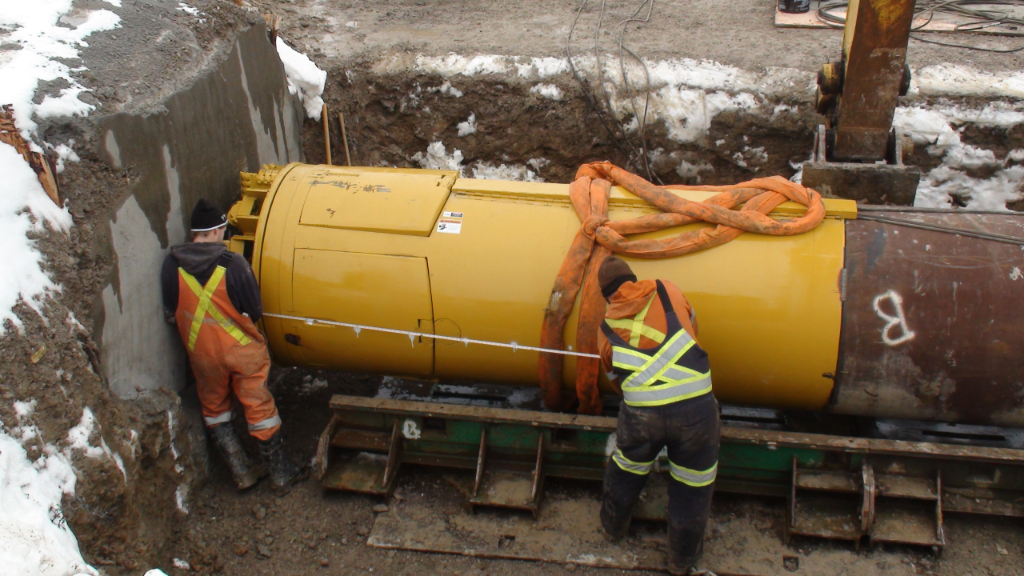How important is it to have your steering head on line and grade?

The Importance of Precision in Engineering
Precision in engineering is crucial, especially when it comes to the alignment of steering heads in construction projects. The steering head, a pivotal part of the directional drilling process, must be meticulously aligned with the planned line and grade. This precision is vital for numerous reasons, ranging from safety to cost-efficiency.
Why Alignment Matters
The alignment of the steering head impacts every aspect of a drilling operation. From the accuracy of the bore path to the safety of the crew and surrounding environment, every element relies on the precision of this alignment.
- Accuracy of Bore Path: Precise alignment ensures that the bore path follows the intended trajectory, reducing the risk of deviations that can lead to project delays or failures.
- Safety: Misalignment can lead to unexpected drilling behaviors, posing risks to the crew and the environment.
- Project Efficiency: Correct alignment leads to smoother operations, reducing the time and resources needed for corrections.
- Cost-Effectiveness: Reducing the need for rework or corrections due to alignment issues can significantly cut down on project costs.
- Compliance with Design Specifications: Staying on line and grade ensures adherence to design specifications and regulatory standards.
- Long-term Stability: Correct alignment contributes to the long-term stability and functionality of the installed infrastructure.
The consequences of misalignment are far-reaching, impacting not just the immediate project but also its long-term viability and safety.
Challenges in Maintaining Alignment
Maintaining the steering head on line and grade is not without its challenges. Factors such as ground conditions, equipment limitations, and human error can all play a role.
- Ground Conditions: Variations in soil type, presence of rock, and groundwater levels can affect drilling accuracy.
- Equipment Limitations: The precision of drilling equipment and the steering head's capabilities can limit alignment accuracy.
- Human Error: The skill and experience of the operating crew play a significant role in maintaining proper alignment.
- Environmental Factors: Weather conditions and other environmental factors can unexpectedly alter the drilling path.
- Complex Project Designs: Complex routes with multiple bends and angles pose additional challenges in alignment.
Despite these challenges, modern technology and skilled operation can mitigate risks and ensure precise alignment throughout the drilling process.
Techniques for Ensuring Precise Alignment
Various techniques and technologies are employed to maintain the steering head on line and grade, ensuring the success of drilling projects.
- Advanced Steering Technology: Utilization of state-of-the-art steering systems allows for real-time adjustments and increased accuracy.
- Skilled Personnel: Experienced operators with a deep understanding of drilling dynamics are essential for maintaining alignment.
- Pre-Drilling Surveys: Comprehensive surveys of the drilling area help in anticipating and planning for potential challenges.
- Continuous Monitoring: Real-time monitoring of the drilling process allows for immediate corrections if deviations occur.
- Regular Equipment Maintenance: Ensuring that all equipment is in top condition reduces the likelihood of technical failures.
- Training and Simulation: Regular training and use of simulation tools keep crews prepared for various drilling scenarios.
By employing these techniques, teams can significantly enhance the precision of their drilling operations, leading to safer, more efficient, and cost-effective projects.
Conclusion
The importance of having your steering head on line and grade cannot be overstated. It is a critical factor in the success of any directional drilling project. Precision in alignment not only ensures the safety and efficiency of the operation but also plays a vital role in the long-term stability and integrity of the infrastructure being installed. Through a combination of advanced technology, skilled personnel, and vigilant monitoring, teams can overcome the challenges of maintaining precise alignment, leading to successful project outcomes.